A guide to robust metrics, alerting, and monitoring of your system with SolMan
Introduction
System monitoring is integral to the overall IT infrastructure and can optimize and enhance the IT environment. At the same time, it is essential to proactively identify problems and troubleshoot them before their impact becomes severe.
A System Monitoring Configuration in SAP Solution Manager can seamlessly monitor the Managed System to detect imminent problems. This makes it easy for you to review and monitor several different aspects of the technical systems that your company uses, offering a snapshot of their current status and allowing you to see trends and detect problems quickly. It covers three main monitoring areas – metrics, alerting, and monitoring, and is therefore indispensable for DevOps teams. blog
In this blog, we give you a step-by-step guide to System Monitoring Configuration and discuss the benefit of the same. Furthermore, we explore how users can deploy different work modes within SAP Solution Manager as the requirement necessitates and allow them to disable monitoring alerts for any maintenance tasks performed on monitored SAP systems.
System Monitoring Overview and Benefits:
System monitoring sends alerts to the recipients according to the thresholds assigned to the metrics, which allows for productive and regular health checks of the IT landscape. Organizations that configure System monitoring achieve higher levels of transparency and get a single, centralized source of truth that becomes the catchall for all automated alerts generation from your IT environment. It further reduces the manual burden on your resources.
It can help the administrator eliminate redundancies and get a focused view by avoiding Alert Flooding by storing the same Alerts in the Alert group table under the relevant Alert (ABAP System not available) in Alert Table. That reduces superfluous Alerts in the Alert Inbox and consumes Less time (see illustration):
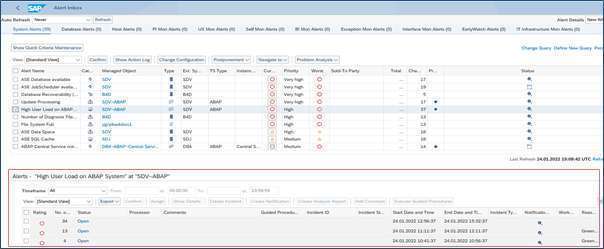
Pre-requisites
- During SOLMAN_SETUP, the System Preparation, Infrastructure Preparation, and Basic Configuration must be completed
- Managed System Configuration needs to be completed successfully in SOLMAN_SETUP Transaction

SAP Alert Calculation Engine (SAP_ALERT_CALCULATION_ENGINE) and Alert Notification Engine (ALERT_NOTIFICATION_ENGINE) jobs need to run successfully in the SolMan system
- Run transaction SU01 to Maintain the email address to User ID
Procedure
- In Transaction SOLMAN_SETUP à Application Operations à System Monitoring, Execute Automatic & Manual Activities
- Activate Auto Email Notifications in Step 2.3 Default settings
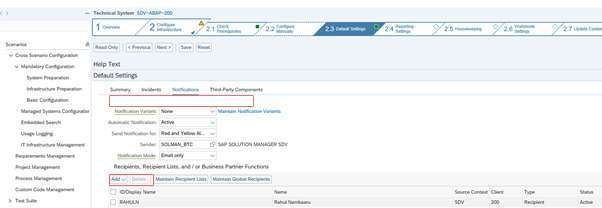
- To Configure the Template, go to Step 4 Template Maintenance, go to “Edit” mode, select monitoring template from managed objects under templates, copy “custom template” from the standard template, and modify the custom template with y or z.
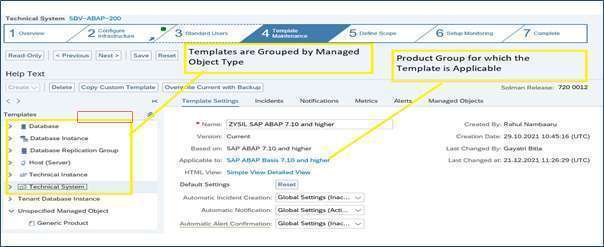
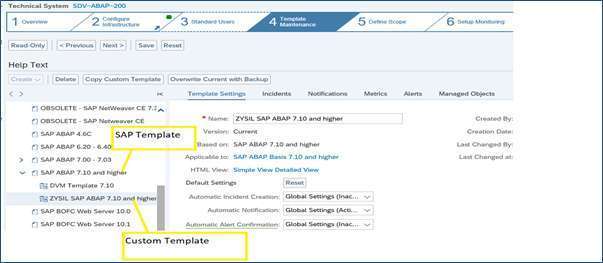
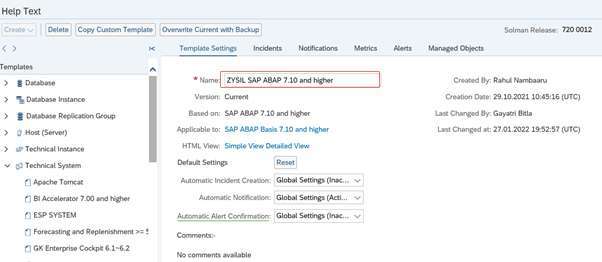
Create Custom Templates for Technical System, System Relevant DB, OS, and Technical Instances, select the managed object, and assign monitoring templates to the managed systems by clicking “Assign Templates” and then clicking “Apply and Activate.”

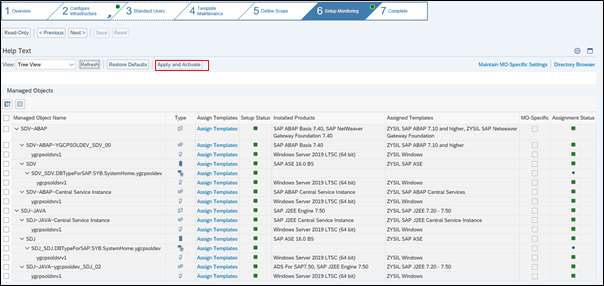
Testing
Go to SM_WORKCENTER Transaction à System Monitoring Tile, and Check the alerts of the SDV System

Here check the number of Alerts generated for the SDV system and the Overall status of the system
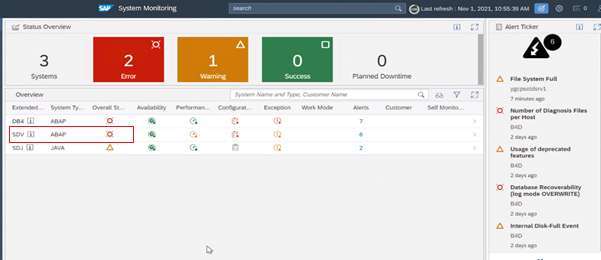
By Selecting the system, we can see Detailed metrics for managed objects (Host, Technical system, Technical Instance, database) and their status (Green, Yellow, Red).
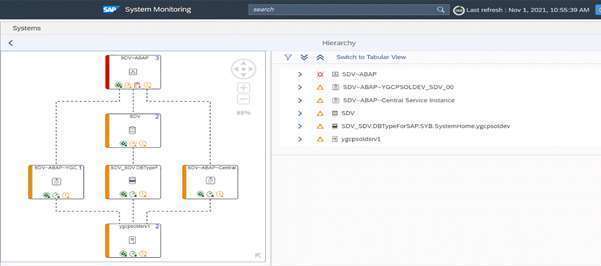
Below able to see Metric Monitoring
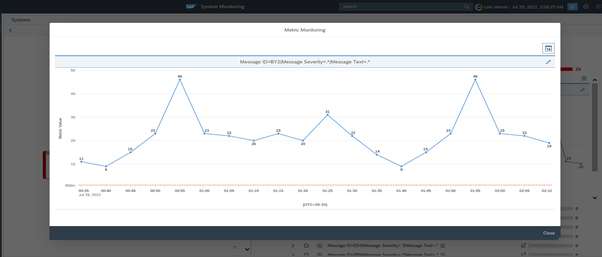
Automatic alert email notifications get generated when alerts are triggered in System monitoring, and alert email notifications are sent to the relevant email id
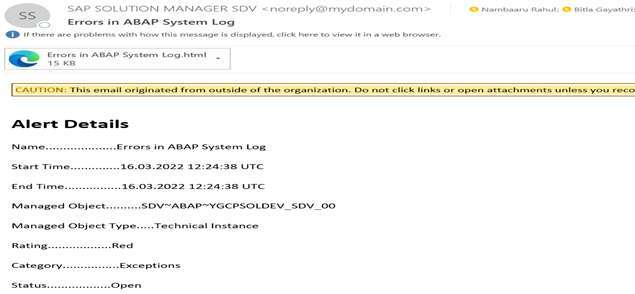
Go to the Alert Inbox tile in SM_WORKCENTER Transaction and Check the SDV System alerts, Database alerts, Host alerts, etc.,

Here, we can see all the SDV system alerts and their current rating (Error, warning)
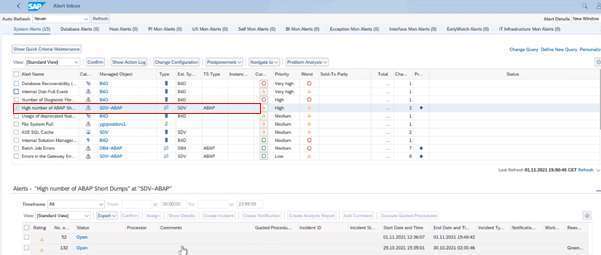
Focused Insights Dashboards
This enables a view into the Operation Control Centre Dashboards for System Monitoring Alerts.
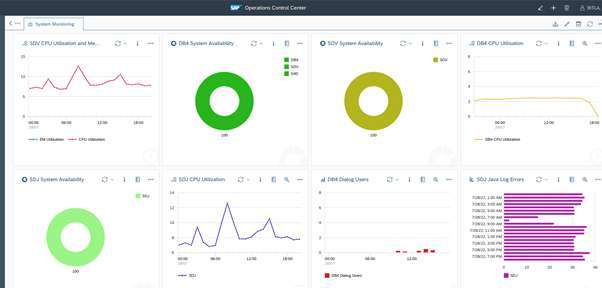
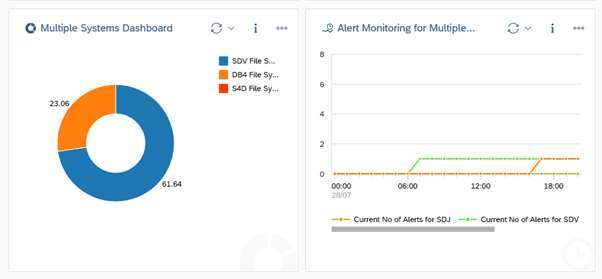
You can see Alert Status for System Monitoring Alerts in Operation Dashboard
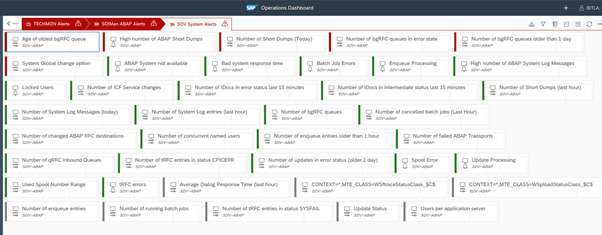
Enabling Work Mode for Technical System
While SAP Solution Manager can monitor and manage systems on an ongoing basis, at the same time, SAP administrators often use Solution Manager work modes to suspend alerts of monitored systems for any maintenance tasks. The principal use cases for WMM, i.e., Work Mode Management, are Alert Suppression, Landscape Planning, and Downtime Reporting.
With WMM, you can define work modes on various technical components and then set up a schedule of how the customer will use them. The IT calendar is tightly coupled with this process. The launch point for WMM is the IT calendar, providing complete transparency of all planned data-driven events.
Shedding light on the pre-requisites & steps:
After System monitoring Activation, we can enable Work Mode for Technical Systems
Need the Authorizations given below to access the “Technical Administration” tab in Transaction SM_WORKCENTER
SAP_TECHNICAL_ADMIN_COMP
SAP_TECHNICAL_ADMIN_DISP_COMP
Activate the below Services in SICF Transaction
ITCALENDAR, WORKMODE_APP, WMM_REP, IT_CALENDAR, SOLMAN_COMMONS_SRV, WMM_DATA_SRV
Add recipients in the global receipt pool tile and also in the receipt lists tile in SM_Workcenter Transaction

Click on notification Resources Tile and save the Email Format
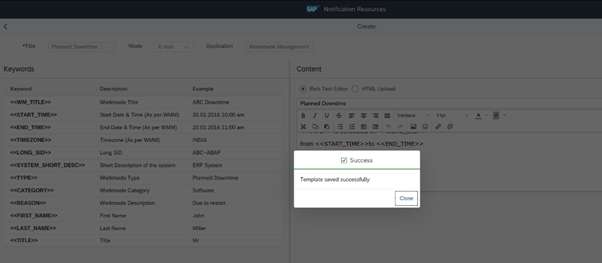
- Unmark the Monitoring Enabled Checkbox for ” Planned Downtime” in “Work Mode settings” Step in System Monitoring Configuration in SOLMAN_SETUP Transaction

Procedure:
In Transaction SM_WORKCENTER à Technical Administration àSelect IT Calendar and Work Modes tile

Select Technical System, Select the SPR system, and press “Work Mode.” It will open the work mode management screen in a new window.

Select the Time zone, start and end date, type, and category. Mark the Check Box of the “Recurring” Option for recurring work modes. Add other systems by clicking on the Dropdown under “Mass Select Technical Components.”
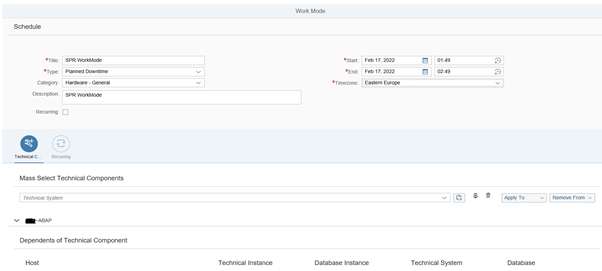
Send Email Notifications related to Planned Downtime to Recipients and Go to IT Calendar to find the created Work Mode for SPR System.

Work Mode Analytics and data reported:
- The total duration of planned downtime for the selected system in the IT Calendar
- Used planned downtime àsystem unavailability during planned downtime
- Unplanned downtimes our outages à unavailability outside planned downtime
- Total downtime is the sum of scheduled downtimes and outages
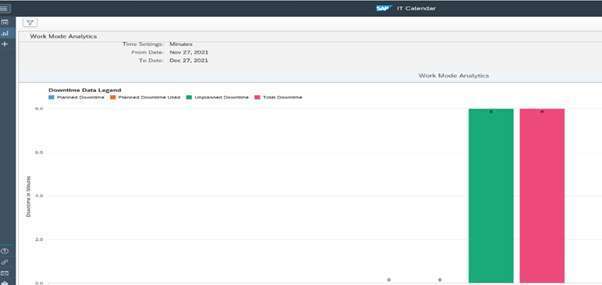
Testing:
After pushing alerts in System Monitoring, alerts do not trigger to Alert Inbox
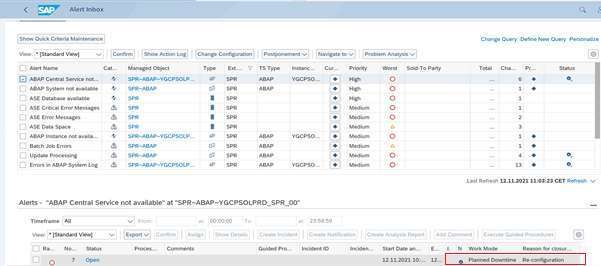
Below is the screenshot after the Work Mode for the SPR System is complete
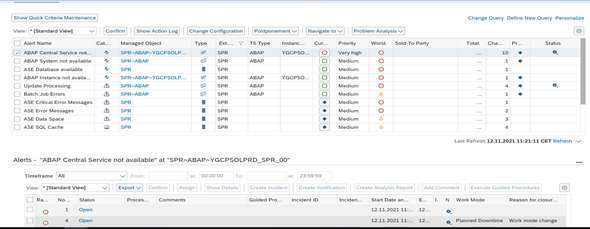
System Monitoring Troubleshooting:
Issue: In the case of the Alerts not being generated in the Alert Inbox and Email Notification not received to the User Email ID,
Check Points:
- Re-check Mandatory and Managed system configuration
- SAP_ALERT_CALCULATION_ENGINE job needs to run successfully in SolMan System
- We need to check SCOT Configuration and Email ID needs to be maintained to user ID
- Alert_Notification_Engine job needs to run successfully in SolMan System
- Automatic Alert Notification should be active in Global Level in System Monitoring Configuration à Step 2.3 Default Settings
- Check Whether WorkMode is active for systems in IT Calendar and WorkMode Tile in SM_WORKCENTER Transaction
- Check Data collection for System in Transaction SM_WORKCENTER à System Monitoring Tile à Double click on SDV System à In Hierarchy Tab à Drop down Managed Objects, Alerts, and Metrics à Click on Metric to see Metric Data Collection
- In Transaction MAI_TOOLS, Analyse the Issue by clicking on the given tabs
- Metric Troubleshoot
- Data Provider Check for PULL, RFC Metrics
- Metric, Event, and Alert Details
If you are looking for a big-picture view of your entire infrastructure, look no further than SAP Solution Manager’s system monitoring functionality. We have examined the System Monitoring and Work Mode Management components of SAP Solution Manager to show you how well the two work together. Whatever your company’s unique requirements may be – including your data quality, integrations, and system health management we can leverage SAP Solution Manager to customize it to meet your needs. Reach out to YASH if you would like to leverage SAP Solution Manager for your business needs
References
https://support.sap.com/en/alm/solution-manager/expert-portal/system-monitoring.html
https://launchpad.support.sap.com/#/notes/0002568235
https://blogs.sap.com/2016/10/31/work-mode-management-sap-solution-manager-7.2/
















